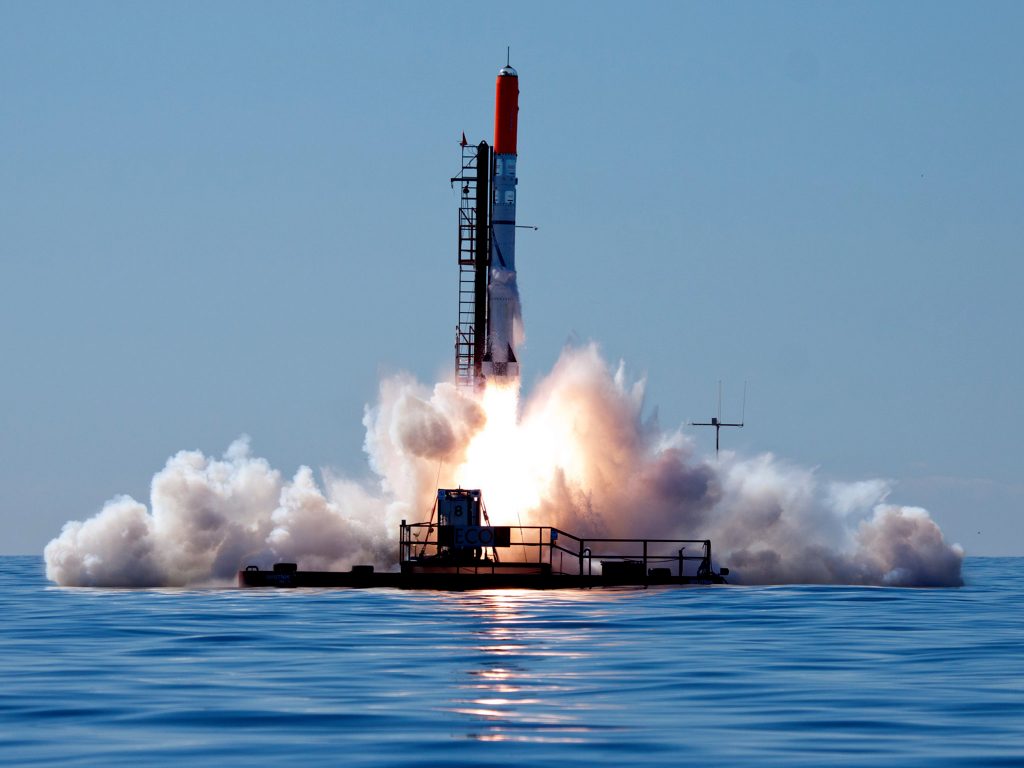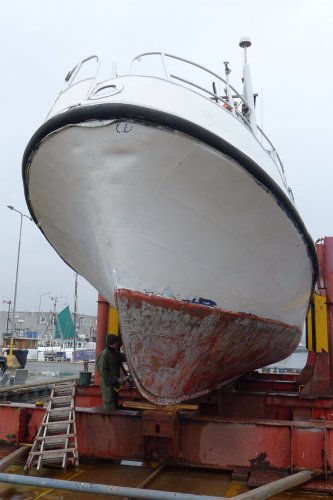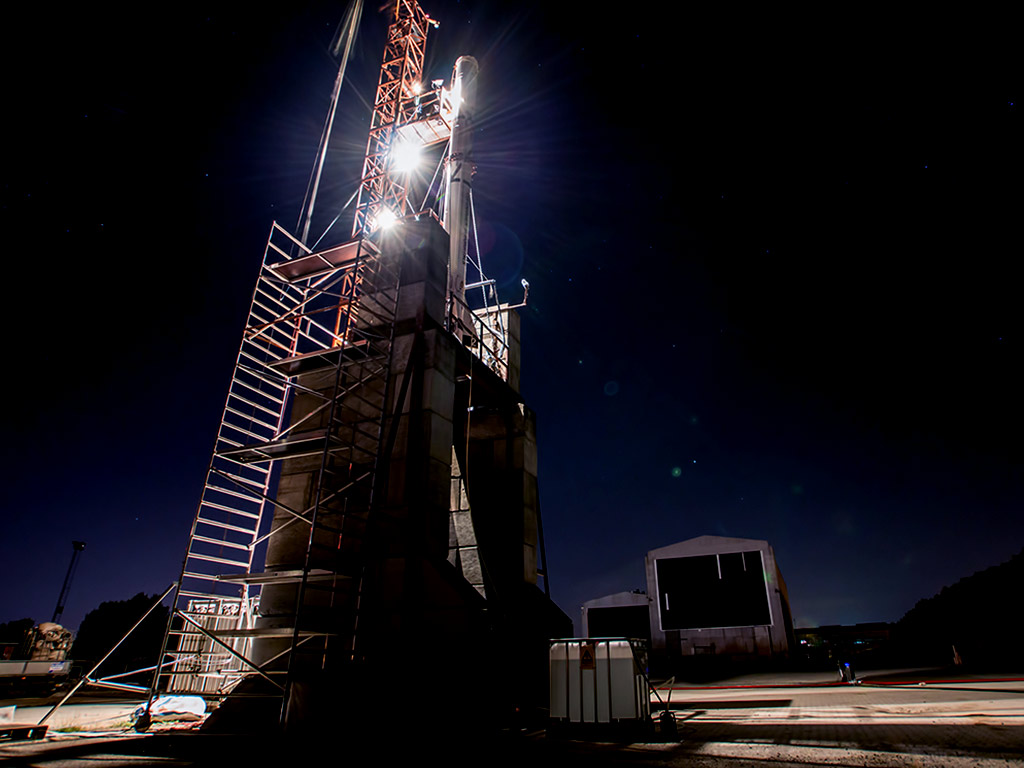Wednesday
Tuesday evening, Jop, Scott, Johansen and I travelled to Bornholm. Jesper arrived the following day. Per who lives on the island, joined on Wednesday.
We arrived early in the morning at Nexø harbour, after a brief night’s sleep aboard the good ship M/S Hammerodde.
The air temperature was just above freezing. The auxiliary engine on the Vostok was started, to pre-heat the cooling system for the main engine. We made the final agreements with the slipway, cast off and set sail through Nexø harbour towards the ship elevator.
The slipway master activated the controls, and by the magic of hydraulics, the side-supports slid towards the Vostok, and gently but firmly, secured it to the tram. The engines on The Vostok were turned off, and the slipway master activated the elevator to lift it out of the water. The entire scene was filmed by TV2 Bornholm [red. A local TV broadcast station], and later that evening, they showed a segment on our slipway stay.
http://play.tv2bornholm.dk/?area=specifikTV&id=276272#276272
Now that it was firmly on land, Per started up the high-pressure hose.
Fouling, old anti-fouling, loose paint and other loose debris was blown off in a cloud of water vapour.
Afterwards, we began inspecting the hull.
Per had borrowed an ultrasonic thickness-gauge, which he used to measure the thickness of the hull. The thickness of the hull was surprisingly even over large areas, and we ended up with a better result than we had initially feared.
Then, we started up several angle-grinders with rotating steel brushes, and proceeded to remove loose paint, and various forms of fouling on the entire hull.
Before we purchased the ship, an additional plates had been welded on to the underwater hull; One on either side of the ship, both being the same size, and in the same place. These sheets were placed in exposed locations. The one on the starboard side has clear indications of having struck something earlier. These two sheets were the only parts of the ship, which showed any visible sign of wear-and-tear. We cleaned the damage and removed all loose paint, so there was a smooth surface to paint on.
At the port quarter, we found a thin area, where cooling water was seeping out. After having removed a piece of soft wood, and some damaged material, we found a small hole to the auxiliary engine cooling water tank. We made a deal with a local ship welder, who agreed to replace the sheet in that part of the hull.
We ordered more anodes from the same company, for The Vostok. The existing ones were pretty much used up, so in the last moment. We were first able to order the anodes after the ship was on land, because it was first at that time, we could tell the precise dimensions of the attachments. Luckily, The Vostok was fitted with threaded holes of standard anode dimensions.
The weather on Wednesday was too wet to paint.
Thursday
On Thursday morning, we had to get up early. The weather in the morning looked promising for painting, but the weather forecast promised rain later in the day. It was therefore important to get the first layer of paint on the hull as soon as possible.
After a final cleansing, several people started on the large paint brushes. The first layer of paint has to be carefully worked into the uneven plate surfaces. This is best done by hand. We intend to apply the following layers using an airless spray, because it will be much faster.
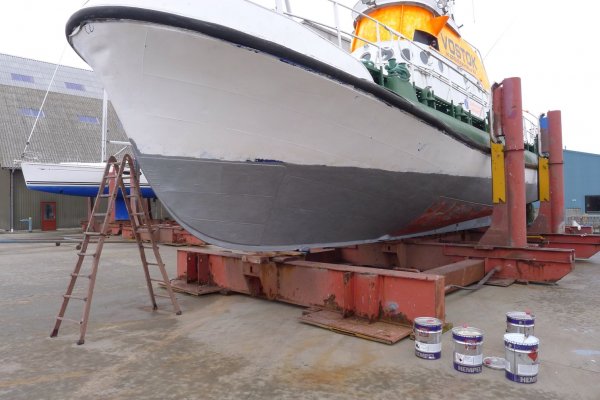
Photo: Kristian Elof Sørensen/CS
While the Vostok was being painted, Sputnik’s engines were started, and all electrical equipment was turned on. The engines ran at half speed forward while moored to get engines, gear boxes and the electrical equipment heated up to get rid of all moisture from the long stay in harbour.
In the middle of the day, Per and I visited the company PL Enterprise A/S – PLE, to agree on the final details regarding the crane-lift of Sputnik on Friday.
In the afternoon, it started to rain a little. We just managed to paint the entire hull once, before the weather became too moist to paint any further.
Friday
Friday morning, the mobile crane from PLE arrived at 8 am, so yet again, we had to get up early to be ready before it would arrive.
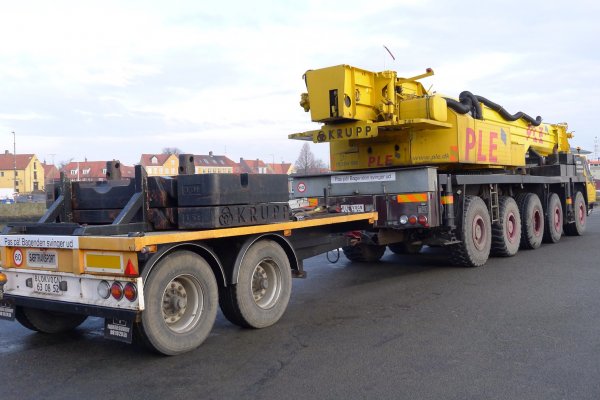
Photo: Kristian Elof Sørensen/CS
Measurements were made, and supporting plates were placed to distribute the load from the supporting legs on the crane. The placement of the crane and its legs, had been carefully investigated and previously agreed upon in great detail, to make sure that it was pressing on a point on the dock, where there is proper support. Large parts of the harbour have been built on horizontal steel beams, supported by a foundation of piers.
The crane lift was quick and efficient. We were ready with four stacks of pallets, for the Sputnik to be placed on top of. The pallets lift the Sputnik up off the ground, which makes it possible to work on the underside of the pontoons.
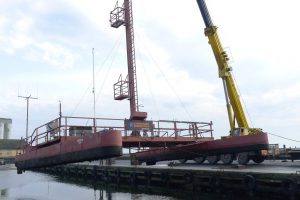
Photo: Kristian ELof Sørensen/CS
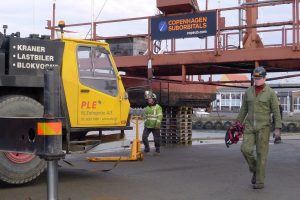
Photo: Kristian Elof Sørensen/CS
After the crane lift was completed, Per started to hose down the Sputnik hull for fouling. Meanwhile, the rest of the team began applying another coat of paint to the Vostok, using the airless spray.
While painting the Vostok, we could see the tug boat Vitus being launched via the ship elevator. It is an impressive sight, to see the air-cushion-slipway system in action. A large fork lift can easily push and rotate a huge tug boat, and place it with great precision, because the ship is hovering on a cushion of air. It is so much more elegant and efficient than other forms of slipway systems; especially when the ship owners gladly sail great distances to get to the Nexø slipway.
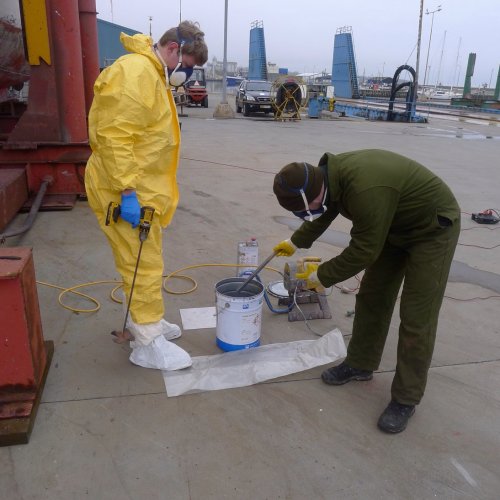
Photo: Kristian Elof Sørensen/CS
At the time this is being written, I am in the Vostok’s saloon, finishing this blog, while listening to Wagner – not the composer Richard Wagner, but the producer of the Airless spray we’re using, J. Wagner Gmbh. Its paint compressor gives off a characteristically piercing sound when it’s working. It’s like listening to music, when the airless spray is giving the Vostok another layer of paint.
Further updates
We will be posting photos with small comments during the entire slipway stay to Twitter and Facebook. This will be happening directly from the phone, and will just take a moment, which is why we can do it continuously and frequently.
You can see the Twitter messages and photos without having a Twitter account at https://twitter.com/copsub?lang=da
The blog at ing.dk [red. The original post in Danish] will be continuously updated with a larger interval, because it requires someone to go to a computer. It will, on the other hand, have more in-depth explanations to what is happening in the various photos.
Parachute drop-test in the weekend
The parachute drop-test department reports, they are following the weather forecast for the weekend closely.
They have asked the DMI flight-weather-service, which recommends they wait until Saturday to decide on a go/no-go on the drop-test. You will be notified as soon as a decision has been made.
See Mads Stenfatt’s blog from earlier, for more information [red. In Danish] which can be found at https://ing.dk/blog/bemandet-faldskaermstest-paa-loerdag-196217
Indiegogo campaign
We have started an Indiegogo campaign to get the money for this year’s launch, which can be found at: https://www.indiegogo.com/projects/launch-of-world-s-most-advanced-amateur-rocket#/
Translated by: Tim Kofoed
